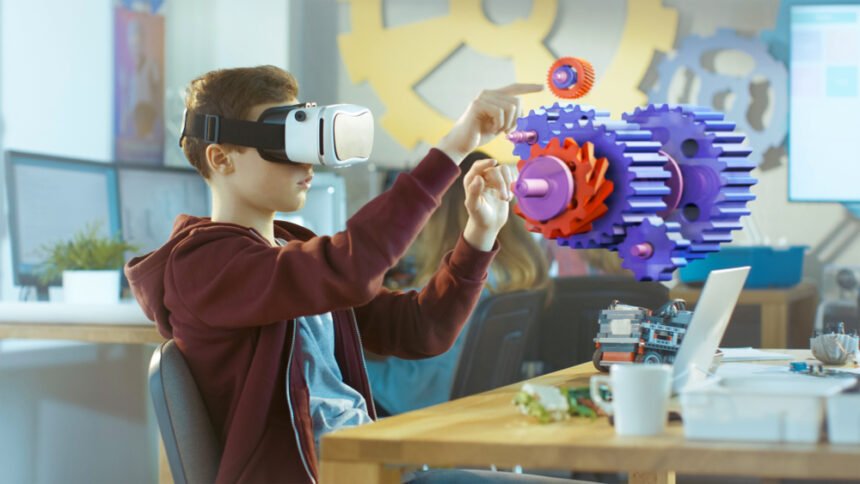Virtual reality is a powerful technology that is changing the future of our world. Research from eMarketer shows that there are 57.4 million VR users in the United States.
One of the fields that is being shaped by VR is education. VR technology provides rich simulations that mimic the sights and sounds of real situations, which can be invaluable in the classroom. Though most prominent as a gaming apparatus, it has quickly emerged as a means of training professionals and educating students in an environment that is at once extremely stimulating and very informative.
While this tech may need to wait before it finds its way into classrooms everywhere, it does hold significant potential even for the students of today.
Benefits of VR in Education
Virtual reality is driving a number of disruptive changes. In this article, we take a look at the benefits of VR in teaching.
Difficult Training
Nursing or medical school are good examples of disciplines that can benefit enormously from the introduction of virtual or augmented reality in the classroom. While most training for future medical caregivers happens in the hospital, VR provides a low-stakes environment in which emergency scenarios can play out.
It’s already true that nursing students have a safety net while they are still being educated—this coming in the form of a floor of other doctors and nurses who are typically able to help them in their initial patient interactions. VR probably will not be replacing these experiences, but it can be used to better prepare future nurses for them.
Similar VR applications could be used for police training—or in short any classroom that needs to simulate situations with great immediacy.
Important Context
Virtual reality can be used to provide valuable context to traditional school lessons. Students who are learning about marine biology can use VR to get a convincing look at ocean scenes. Students who are learning about life in a different country could use VR to take a walk through its market.
It’s well documented that students learn well through multiple forms of media. Lessons are reinforced through repetition, particularly when points can be made in different ways.
By combining read lessons with captivating sounds and visuals, students will be more likely to remember what they have been taught. They may even take a deeper interest in learning more.
Distraction-Free Learning
VR is so immersive that it doesn’t allow for the same distractions that would occur during a typical classroom lecture. Billy can’t flick the back of Samantha’s neck. Tommy can’t check his phone. Alex can’t stare out the window and think about how she would rather be playing soccer.
VR benefits from the same immediacy as practical experience. While students have the headset on, they have no choice but to focus only on what is right in front of them.
It’s Exciting
Finally, VR also has the benefit of being exciting enough to get kids eager to learn. Student engagement is one of the most important metrics for predicting academic success. Even more relevant than native ability, a student’s interest in learning will vastly inform their educational outcomes.
Excitement is one thing VR has in abundance. Who wouldn’t want to take a visit to Pompeii at the end of a lesson plan on volcanic eruptions?
Kids are used to environments of constant stimulation, to the point that it has widdled down their natural attention span.
It’s a problem that has been caused by technology, yes, but it is also one that can potentially be remedied by the right technological solutions and exposure.
Certainly, VR should not be applied constantly, nor as a substitution for reading. It’s a supplementary tool that can be used to improve engagement and make lesson plans very literally come to life before students’ eyes.
Obstacles
Accessibility is perhaps the primary hurdle between classrooms and VR technology. In a world of underfunded schools, how can any district justify spending many thousands of dollars outfitting classrooms with glorified gaming headsets?
The extent to which classroom VR is feasible will certainly hinge largely on the number of resources that can be dedicated to it. We may be many years removed from the day where VR is spread as thickly as tablets are today.
For now, school districts may consider VR along the same veins as they have other STEM-related acquisitions, outfitting each school with several headsets that can be employed across multiple classrooms.
Of course, the schools will also need software that aligns with their VR-related educational goals. While there may not be a simulation available for every mainstream lesson plan, this is a problem that shrinks exponentially with each passing day. VR and AR are growing rapidly.
In the years to come, educational related programs are only expected to grow.







